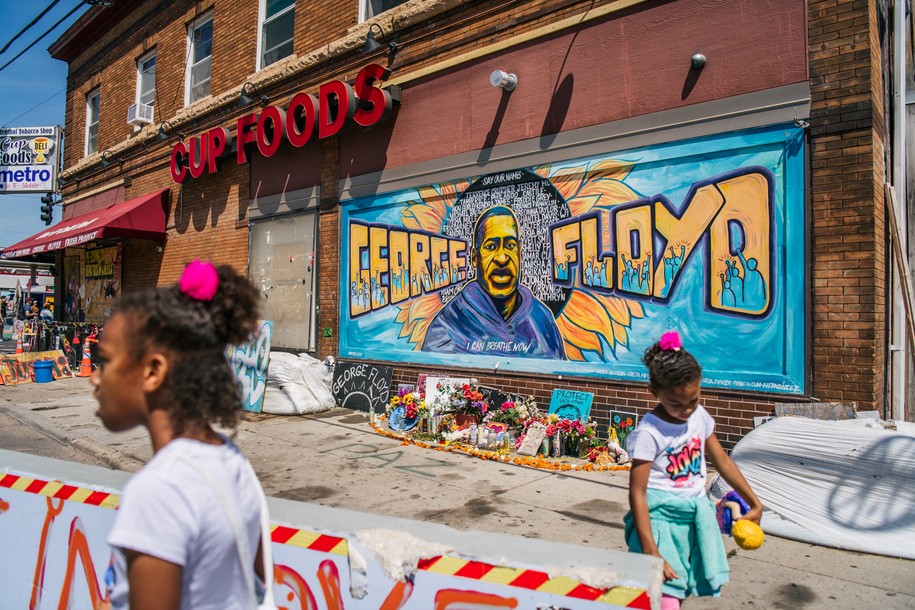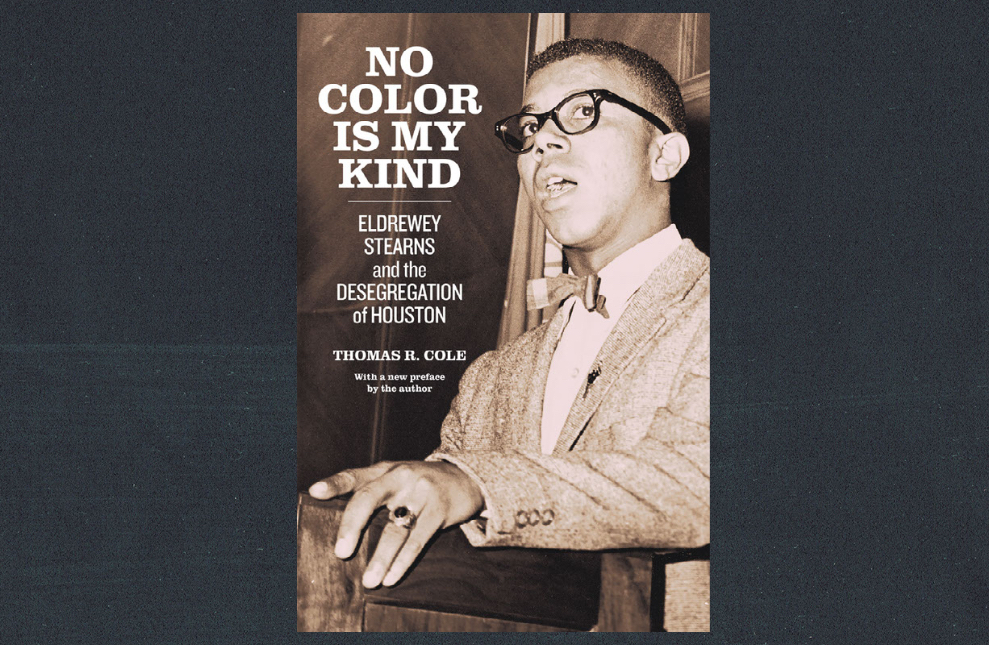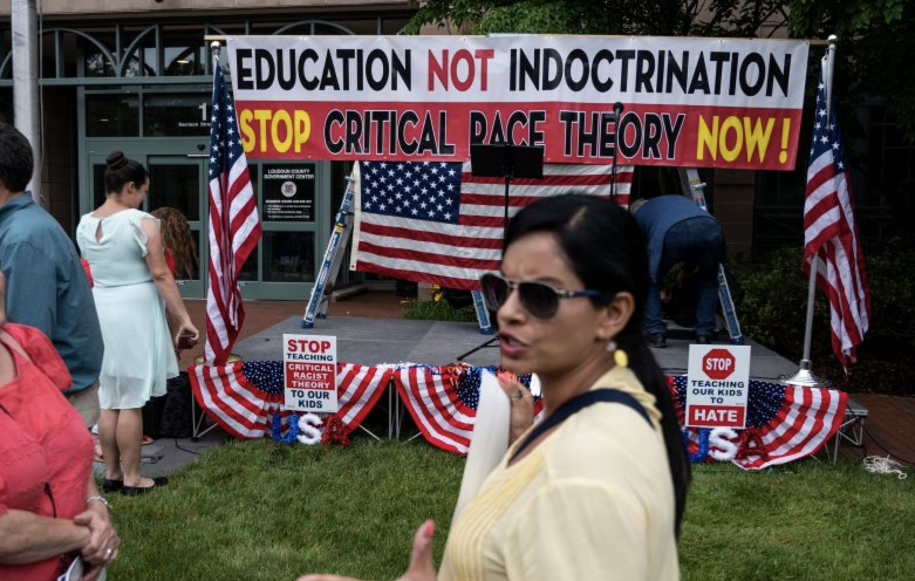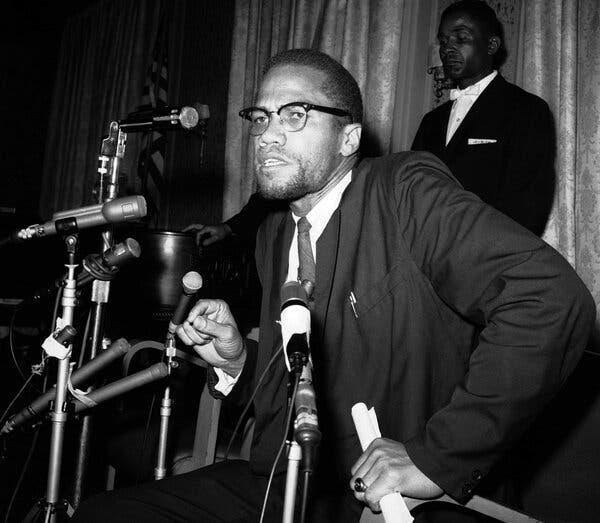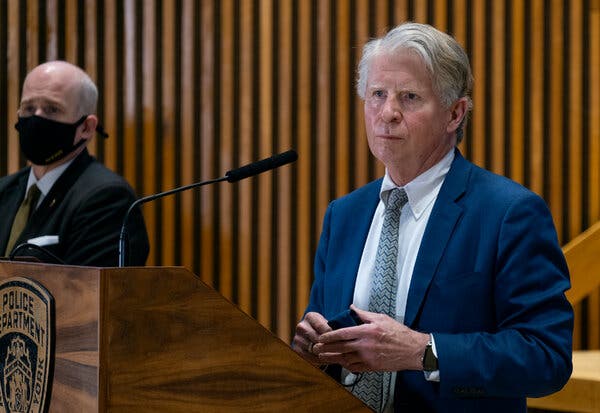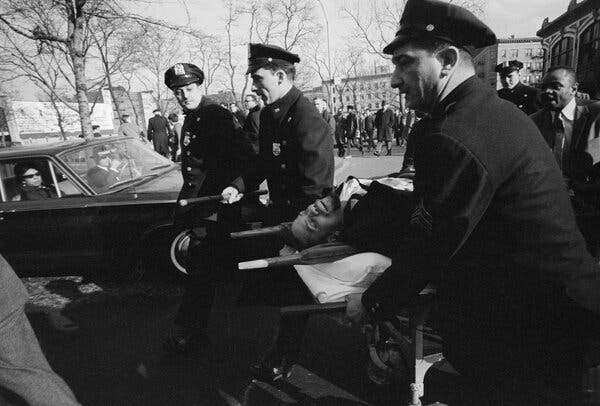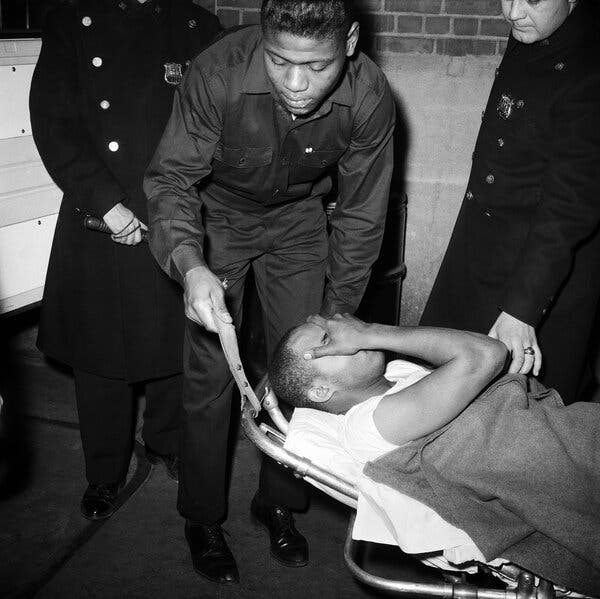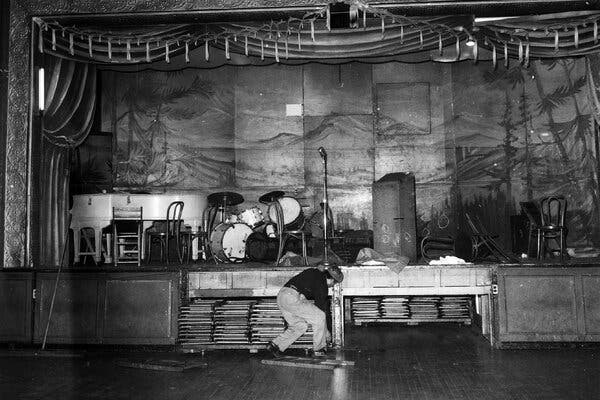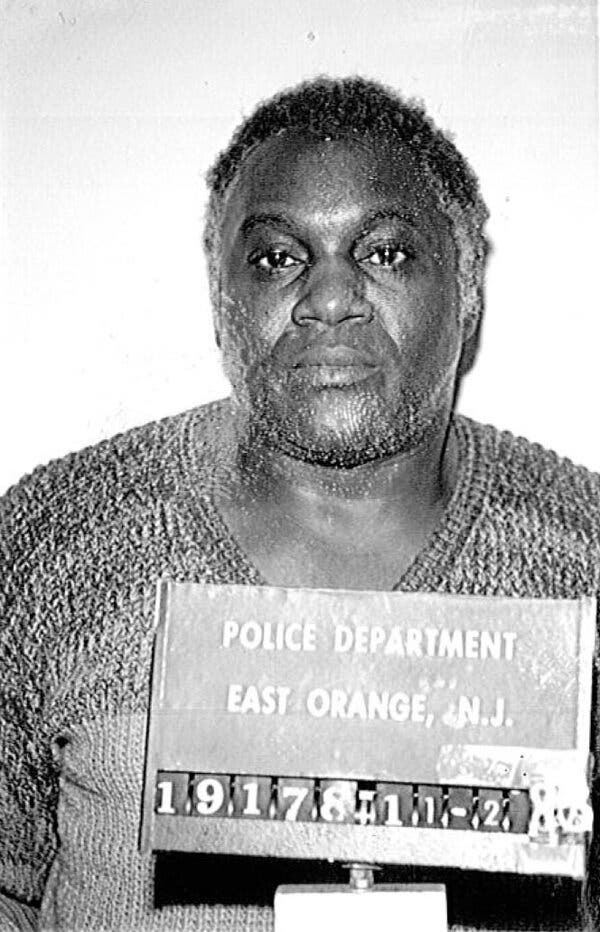Two of the men found guilty of the assassination of Malcolm X are expected to have their convictions thrown out on Thursday, the Manhattan district attorney and lawyers for the two men said, rewriting the official history of one of the most notorious murders of the civil rights era.
For decades, historians have cast doubt on the case against the two men, Muhammad A. Aziz and Khalil Islam, who each spent more than 20 years in prison. Their exoneration represents a remarkable acknowledgment of grave errors made in a case of towering importance: the 1965 murder of one of America’s most influential Black leaders.
“It’s long overdue,” said Bryan Stevenson a civil rights lawyer and the founder of the Equal Justice initiative. “This is one of the most prominent figures of the 20th century who commanded enormous attention and respect. And yet, our system failed.”
A 22-month investigation conducted jointly by the Manhattan district attorney’s office and lawyers for the two men found that prosecutors and two of the nation’s premier law enforcement agencies — the Federal Bureau of Investigation and the New York Police Department — had withheld key evidence that, had it been turned over, would likely have led to the men’s acquittal.
The two men, known at the time of the killing as Norman 3X Butler and Thomas 15X Johnson, spent decades in prison for the murder, which took place on Feb. 21, 1965, when three men opened fire inside the crowded Audubon Ballroom in Manhattan as Malcolm X was starting to speak.
But the case against them was questionable from the outset, and in the decades since, historians and amateur investigators have raised doubts about the official story.
The review, which was undertaken as an explosive documentary about the assassination and a new biography renewed interest in the case, did not identify who prosecutors now believe really killed Malcolm X. Those who were previously implicated but never arrested are dead.
Nor did it uncover a police or government conspiracy to murder him. It also left unanswered questions about how and why the police and the federal government failed to prevent the assassination by at least one member of a New Jersey chapter of the Nation of Islam.
Image
The killing of Malcolm X was one of the most notorious murders of the civil rights era. There were long-held doubts about who was actually responsible.Credit...Marty Lederhandler/Associated Press
That man,
Mujahid Abdul Halim, was also found guilty, and his conviction stands. At the trial, he confessed to the murder, but said and has maintained that the other two men were innocent.
At his home in Brooklyn on Thursday, Mr. Halim, now 80, offered a simple response to the news about his co-defendants.
“God bless you, they’re exonerated,” he said in a quiet voice.
The acknowledgment by Cyrus R. Vance Jr., the Manhattan district attorney who is among the nation’s most prominent local prosecutors, recasts one of the most painful moments in modern American history.
And at a time when racism and discrimination in the criminal justice system are once again the focus of a national protest movement, it reveals a bitter truth: that two of the people convicted of killing Malcolm X — Black Muslim men hastily arrested and tried on shaky evidence — were themselves victims of the very discrimination and injustice that he denounced in language that has echoed across the decades.
In an interview, Mr. Vance apologized on behalf of law enforcement, which he said had failed the families of the two men. Those failures, he said, could not be remedied, “but what we can do is acknowledge the error, the severity of the error.”
Mr. Vance’s re-investigation, conducted with the Innocence Project and the office of David Shanies, a civil rights lawyer, contended with serious obstacles. Many of those involved in the murder case, including witnesses, investigators and trial lawyers as well as other potential suspects, died long ago. Key documents were lost to time and physical evidence, such as murder weapons, were no longer available to be tested.
“This points to the truth that law enforcement over history has often failed to live up to its responsibilities,” Mr. Vance said. “These men did not get the justice that they deserve
Image
Cyrus R. Vance Jr., the Manhattan district attorney, apologized for the conviction of the two men, now known as Muhammad A. Aziz and Khalil Islam, saying they “did not get the justice that they deserved.”Credit...Craig Ruttle/Associated Press
Still, the evidence available was significant.
A trove of F.B.I. documents included information that implicated other suspects and pointed away from Mr. Islam and Mr. Aziz. Prosecutors’ notes indicate they failed to disclose the presence of undercover officers in the ballroom at the time of the shooting. And Police Department files revealed that a reporter for The New York Daily News received a call the morning of the shooting indicating that Malcolm X would be murdered.
Investigators also interviewed a living witness, known only as J.M., who backed up Mr. Aziz’s alibi, further suggesting that he had not participated in the shooting but had been, as he said at the trial, at home nursing his wounded legs.
Altogether, the re-investigation found that had the new evidence been presented to a jury, it may well have led to acquittals. And Mr. Aziz, 83, who was released in 1985, and Mr. Islam, who was released in 1987 and died in 2009 at age 74, would not have been compelled to spend decades fighting to clear their names.
“This wasn’t a mere oversight,” said Deborah Francois, a lawyer for the men. “This was a product of extreme and gross official misconduct.”
The Assassination
Malcolm X was shot at the Audubon Ballroom in Harlem, where he was set to give a speech, on Feb. 21, 1965.Credit...Bettmann Archive, via Getty Images
The assassination unfolded on a bright February day, at the dawn of what was to be a new phase in Malcolm X’s career as a civil-rights leader.
He had introduced himself to the American public six years earlier, a Nebraska-born street hustler turned minister speaking forcefully on behalf of the Nation of Islam, the Black nationalist group, about the way that white authorities abused their power and brutalized Black people.
Some of his ideas, espoused during his time in the Nation of Islam — he called white people devils and advocated racial separatism — were outside the mainstream even by today’s standards. The news media, which was then almost wholly white, portrayed Malcolm X as a “
racist” and a dangerous agitator and referred to the Nation as a “cult.”
But he was also a person of intense fascination, a fiery and persuasive speaker who voiced ideas that many Americans had never heard before. And in 1965, a year after having left the Nation of Islam, he was beginning to define the mission of a new group, the Organization of Afro-American Unity — the subject of his planned speech at the Audubon Ballroom.
But shortly after he began to speak, he was attacked by three gunmen who rushed the stage, firing at him in front of his pregnant wife and three of his daughters and killing him. He was 39.
Mr. Halim, then known as Talmadge Hayer, among other names, was apprehended in the ballroom after being shot in the thigh. Mr. Aziz, then known as Norman 3X Butler, was arrested five days later, and Mr. Islam, known as Thomas 15X Johnson, another five days after that. Within a week, the three men, all members of the Nation of Islam, had been charged with murder.
Mujahid Abdul Halim, also known as Talmadge Hayer, was shot in the leg after the assassination. He later confessed to the killing.Credit...John Lent/Associated Press
At the trial in 1966, prosecutors cast Mr. Islam, who was once Malcolm X’s driver, as the assassin who fired the fatal shotgun blast. Mr. Halim and Mr. Aziz were said to have followed close behind, firing their pistols. Ten eyewitnesses said they had seen Mr. Islam, Mr. Aziz or both.
But the witness statements were contradictory, and no physical evidence tied Mr. Aziz or Mr. Islam to the murder, or even the crime scene. Both men offered credible alibis, which were backed by testimony from their spouses, friends and others.
And when Mr. Halim took the stand for the second time during the trial and confessed, he insisted that his two co-defendants were innocent.
On March 11, 1966, all three defendants were found guilty and, a month later, sentenced to life in prison.
Even then, evidence was already pointing to another theory of the case.
Mr. Stevenson, who has spent much of his career fighting against wrongful convictions, said the assassination of Malcolm X, followed three years later by that of Martin Luther King Jr., traumatized Black people in the 1960s, but finding the truth never seemed to be a priority for law enforcement and the government.
Wednesday’s acknowledgment, he said, “just underlines how casually and recklessly these cases were investigated and ultimately concluded.”
“It undermines already tenuous and fragile confidence in the rule of law to protect Black voices that were challenging bigotry and discrimination,” said Mr. Stevenson. “And it also just represented our continuing problem with reliability and fairness, and those are the problems that we’re still reckoning with today.”
Reinvestigating the Case
The stage of the Audubon Ballroom was riddled with bullet holes after the assassination.Credit...Al Burleigh/Associated Press
Some of the evidence that appeared to exonerate Mr. Aziz and Mr. Islam emerged during their trial, but because key information was withheld by the authorities, its significance only became clear later.
One defense witness, Ernest Greene, testified that he had seen the man with the shotgun, and described him as dark-skinned, stocky and sporting a “deep” beard — a poor match for Mr. Islam, the man who was cast in the role by prosecutors, who was light-skinned, lean and clean-shaven.
But Mr. Greene’s description matched another man, one whose name jurors did not hear: William Bradley, a member of the same Nation of Islam mosque in Newark, N.J., as Mr. Halim. Mr. Bradley was an enforcer for the Nation of Islam, which Malcolm X had joined in 1952 and promoted unceasingly for a dozen years before an acrimonious break the year before the assassination.
He was less than six feet tall, weighed 182 pounds and was dark-skinned. He had been a machine-gunner in the Marine Corps and his criminal history included a charge of possessing an illegal weapon.
The description of Mr. Bradley was in F.B.I. files at the time, and Mr. Halim even identified him as one of the assassins. And the authorities were aware that the Nation of Islam was targeting Malcolm X; a week before the assassination, his house was firebombed while he slept inside with his wife and daughters.
But it would be years before the connection to Mr. Bradley became more clear, as a succession of amateur investigators — journalists, historians, biographers and others — took up the case.
One of the most important of these civilians was Abdur-Rahman Muhammad, who hosted a Netflix documentary series early last year, “Who Killed Malcolm X?,” that again assembled the case for the two men’s innocence — and others’ guilt. Upon
the release of the series, Mr. Vance announced that he would take up the case. The re-investigation was underway when a new biography was published, “The Dead Are Arising,” by Les and Tamara Payne, which identified Mr. Bradley as one of the assassins. That book
won a National Book Award last year and a Pulitzer Prize this year.
“I feel that I was able to get some semblance of justice for Brother Malcolm X and his family, first and foremost, and second of all, justice for these two men,” Mr. Muhammad said in an interview on Wednesday. “It means that my life mattered, that I contributed to the betterment of society and making our country a better and more equitable place.”
Phil Bertelsen, a co-executive producer of the series, said he hoped the exonerations would prompt Congress to seek answers to questions about the federal government’s role in the case.
“It brings us closer to understanding the mishandling of the prosecution, but the question still remains why those responsible were not investigated and prosecuted,” Ms. Payne said of the review.
Mr. Vance’s investigators, working with Mr. Islam and Mr. Aziz’s lawyers, examined the evidence that had long been laid out and pored over publicly, including the F.B.I. file on Mr. Bradley. (Mr. Bradley, who changed his name to Al-Mustafa Shabazz, died in 2018 and his lawyer denied that he had participated in the murder.)
Years after the assassination, scholars suggested William Bradley, an enforcer for a Nation of Islam mosque in Newark, was likely the man who fired the fatal shotgun blast.Credit...East Orange Police Department
The bureau’s files contained a report stating that officials in New York had not been told that Mr. Bradley was a suspect, as well as an informant’s secondhand account that Mr. Bradley was the shotgun assassin.
The panel also interviewed a new witness and reviewed reams of records: public statements, prosecutors’ files, court transcripts, and documents generated during the initial investigation, grand jury proceedings, the trial and post-conviction appeals.
One of the most significant weaknesses in the government’s case, the review found, was Mr. Halim’s confession and his assertion that his co-defendants were innocent.
Although all three defendants were members of the Nation of Islam, prosecutors failed to draw any connection between Mr. Halim, who attended the mosque in Newark and said his co-conspirators were from New Jersey, and Mr. Islam and Mr. Aziz, who attended the Nation’s mosque in Harlem. Several defense witnesses said Mr. Aziz and Mr. Islam were home at the time of the murder.
While most of the people the review panel sought to interview were dead, a witness who initially came forward at a screening of the documentary offered an account that seemed to confirm Mr. Aziz’s alibi and had never been heard by the authorities.
The witness, identified as J.M., said he was handling the phone at the Nation’s Harlem mosque on the day Malcolm X was killed when Mr. Aziz called and asked for the mosque’s captain. They hung up while J.M. went to find the captain, and then J.M. called Mr. Aziz back on his home phone. Mr. Aziz answered.
Lives Shattered
Representatives for the two exonerated men said that the moment meant a lot to Mr. Aziz, and to Mr. Islam’s family. But Mr. Shanies, one of the civil rights lawyers representing them, said their convictions had a “horrific, torturous and unconscionable” effect that cannot be undone.
The two men spent a combined 42 years in prison, with years in solitary confinement between them. They were held in some of New York’s worst maximum security prisons in the 1970s, a decade that bore witness to the Attica uprisings.
Mr. Aziz had six children at the time he was convicted; Mr. Islam had three. Both men saw their marriages fall apart and spent the primes of their lives behind bars.
Even after their release, they were understood as Malcolm X’s killers, affecting their ability to live openly in society.
“It affected them in every way you could possibly imagine, them and their families,” Mr. Shanies said.
In the final episode of the documentary series, Mr. Muhammad, the host, asks Mr. Aziz to sign a petition asking the Manhattan district attorney to review his conviction. Mr. Aziz obliges, but says that the 20 years he spent in prison had erased his faith that his name would ever be cleared.
Nate Schweber contributed reporting. Susan C. Beachy contributed research.
The 1966 convictions of the two men are expected to be thrown out after a lengthy investigation, validating long-held doubts about who killed the civil rights leader.

www.nytimes.com
